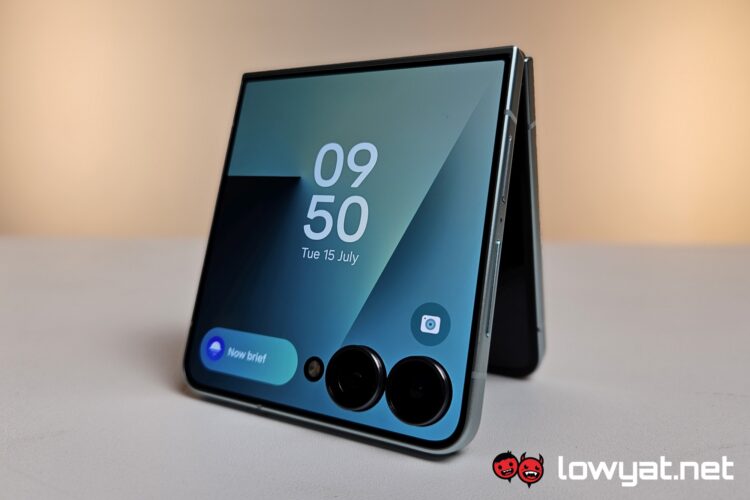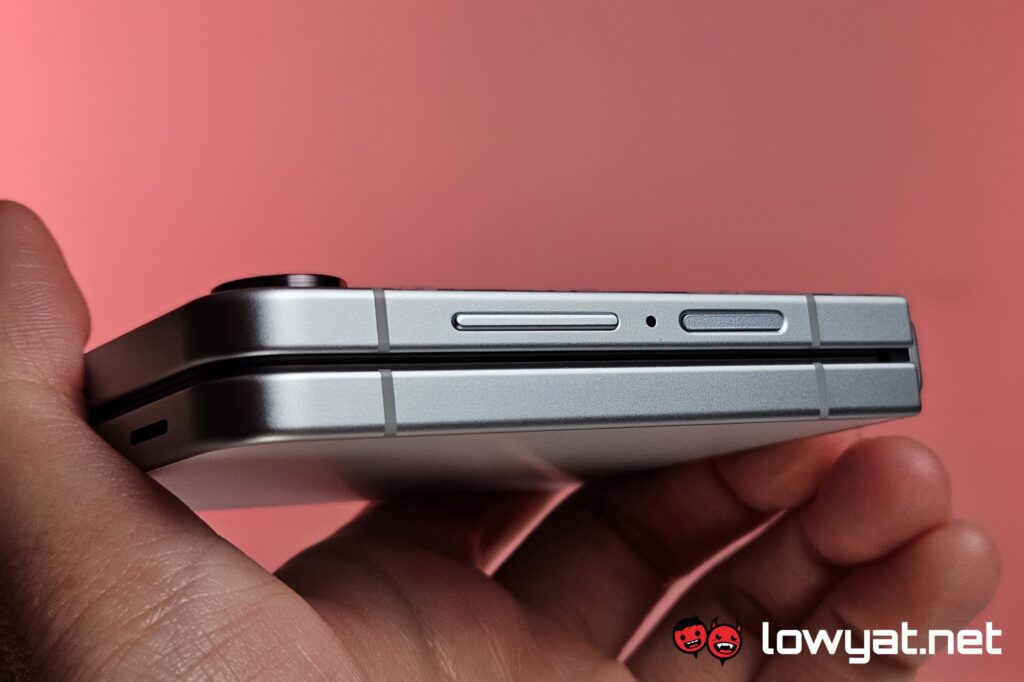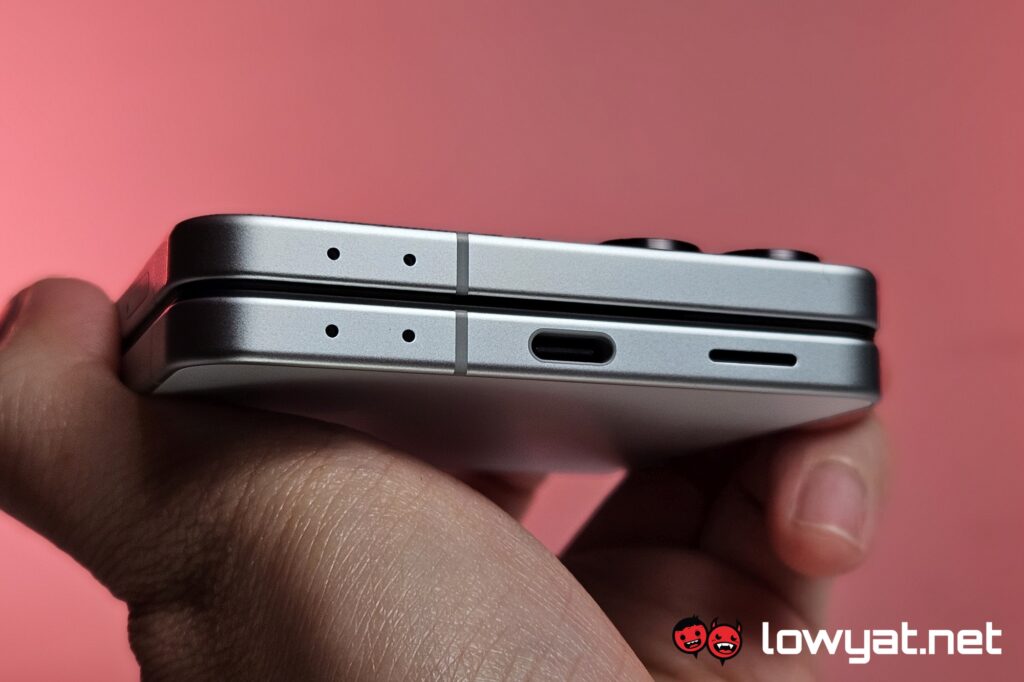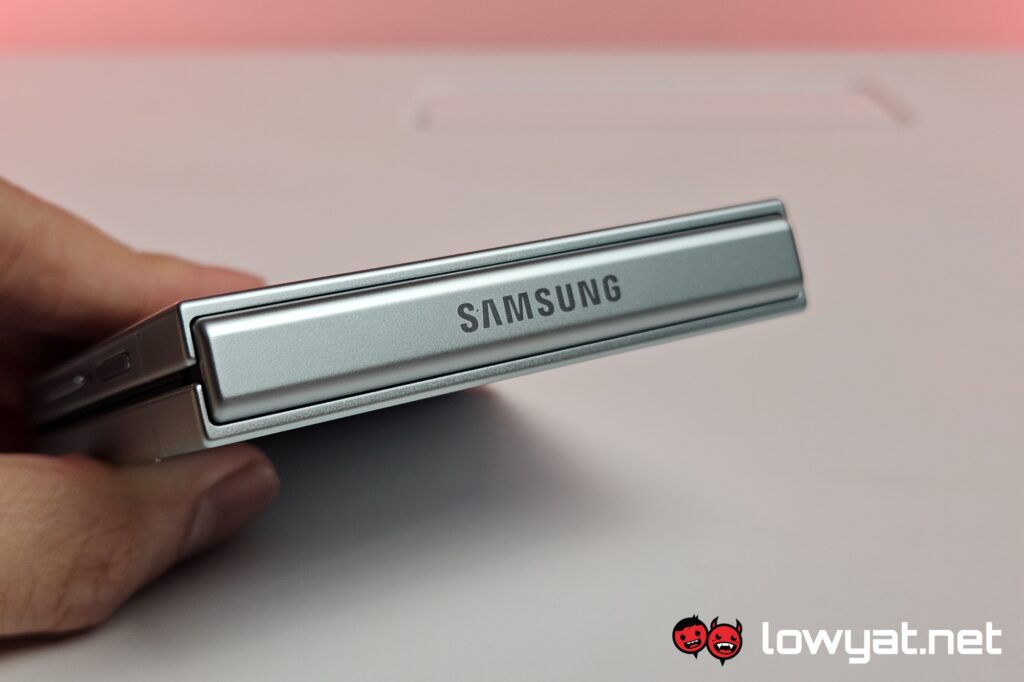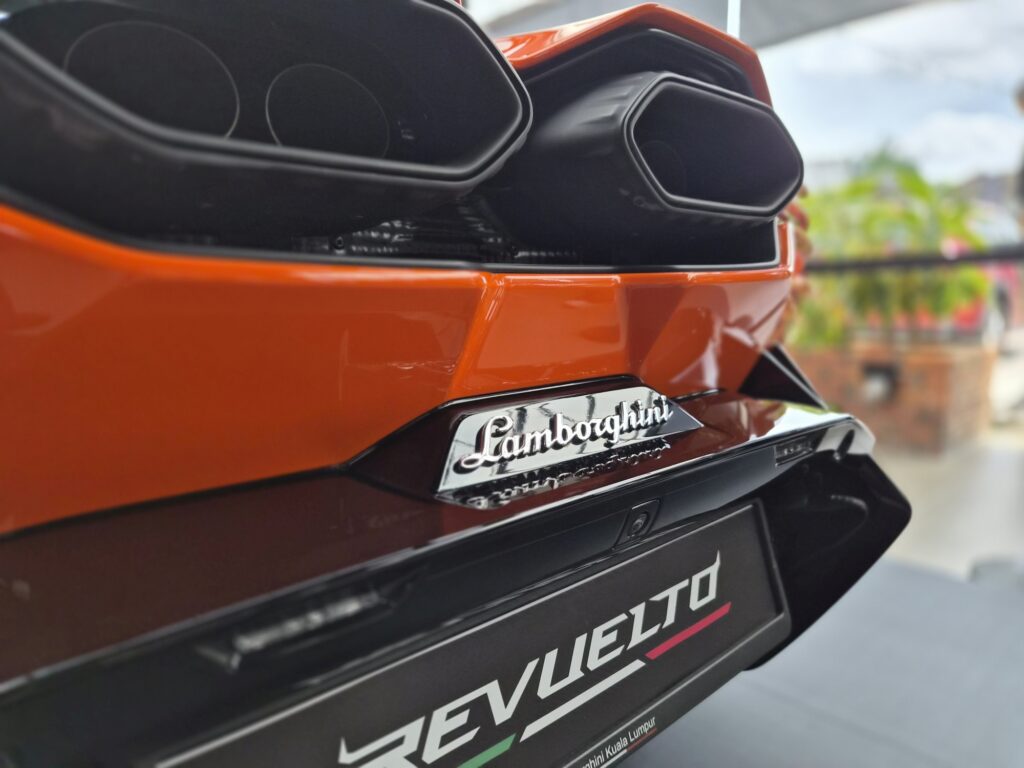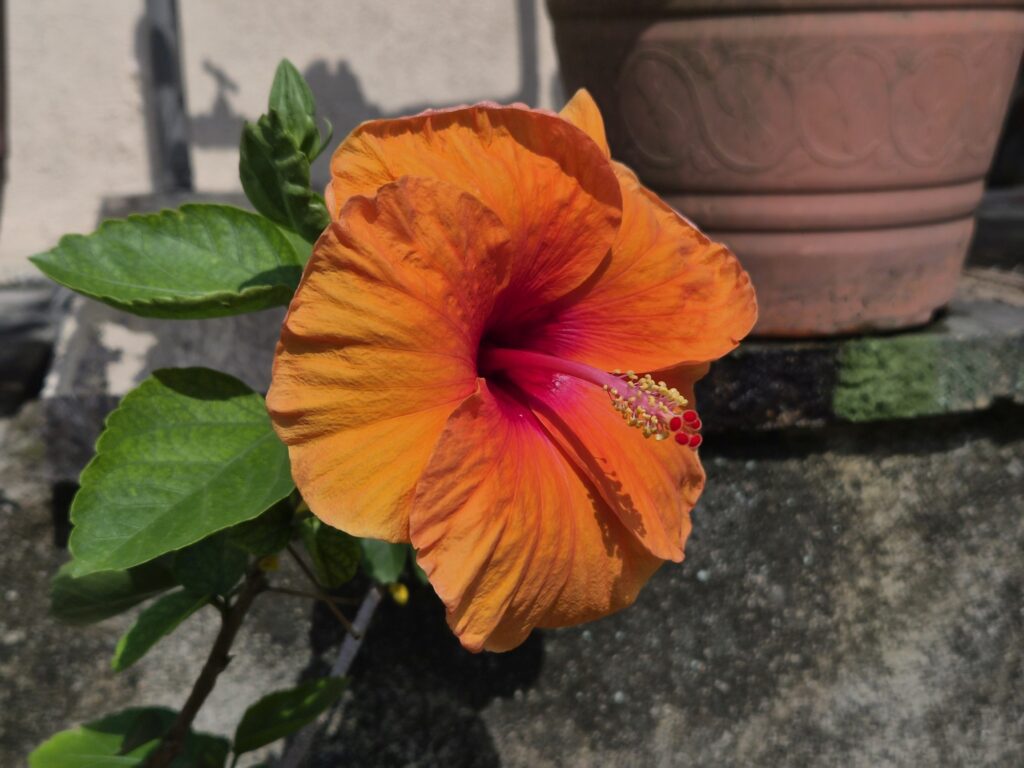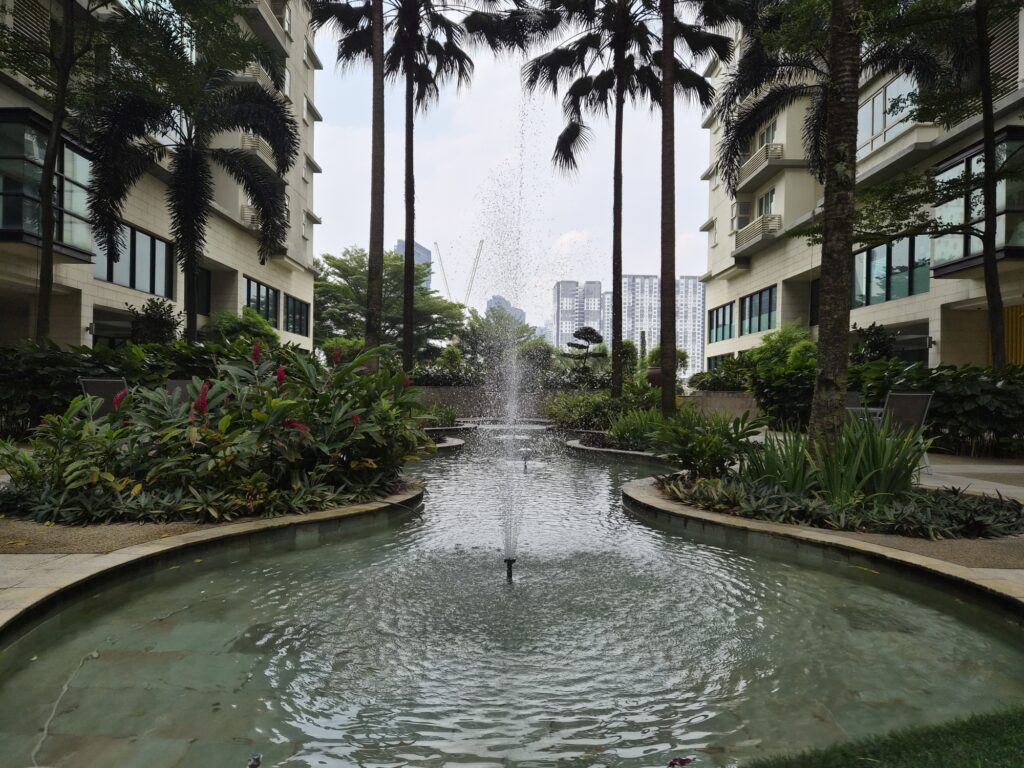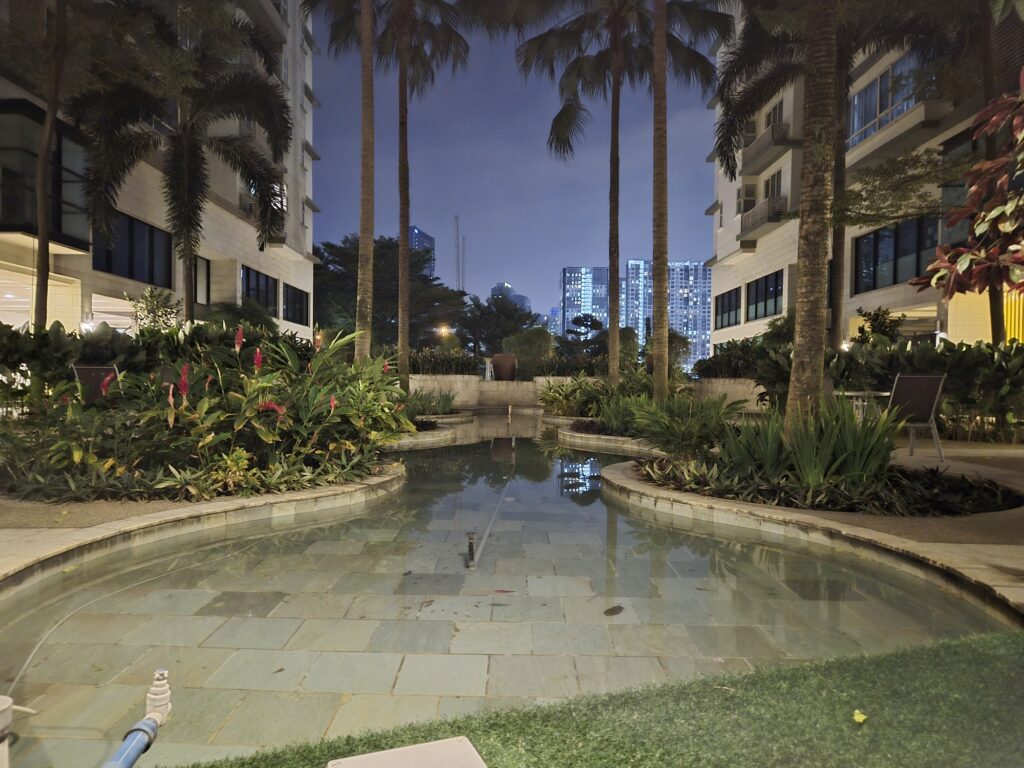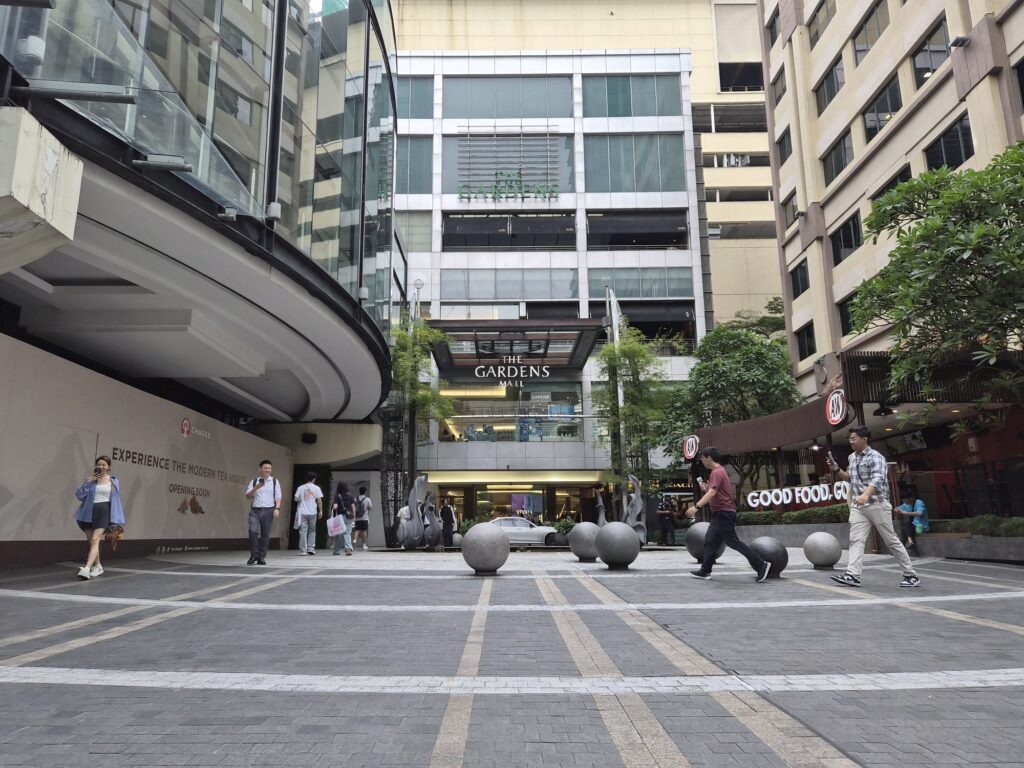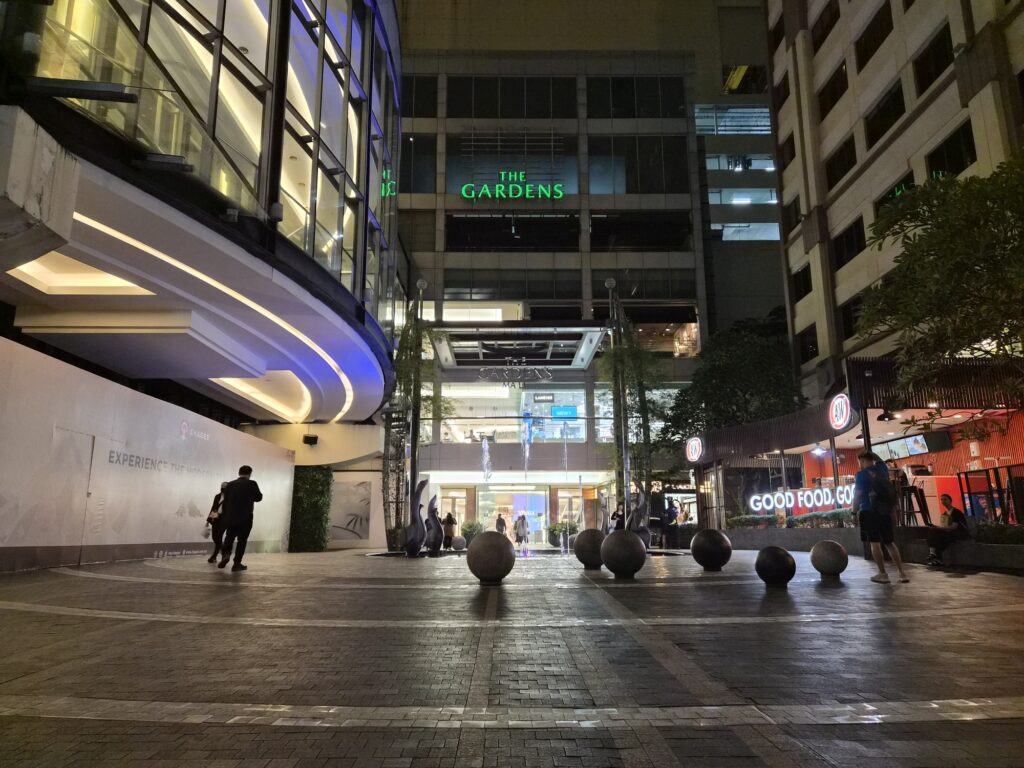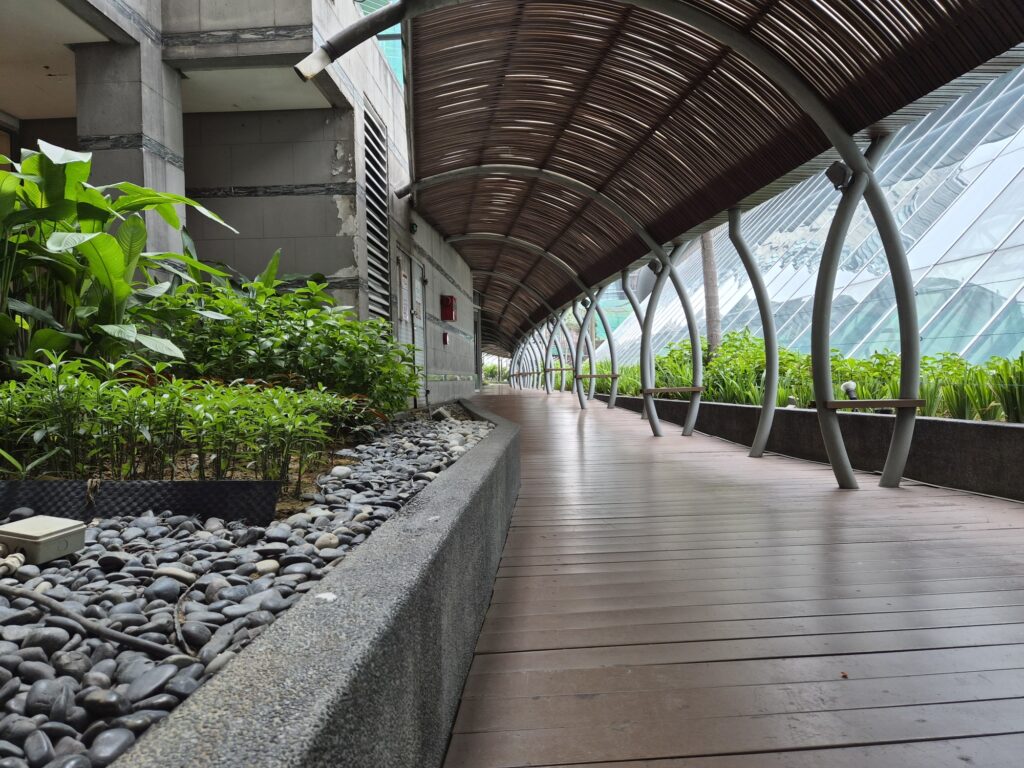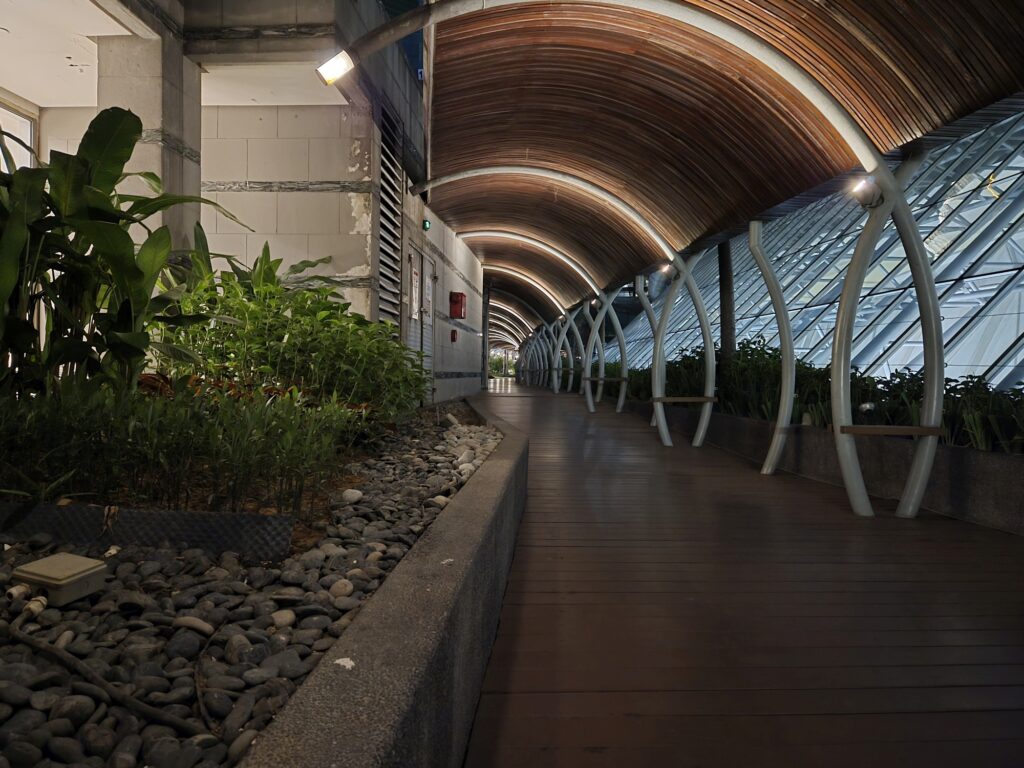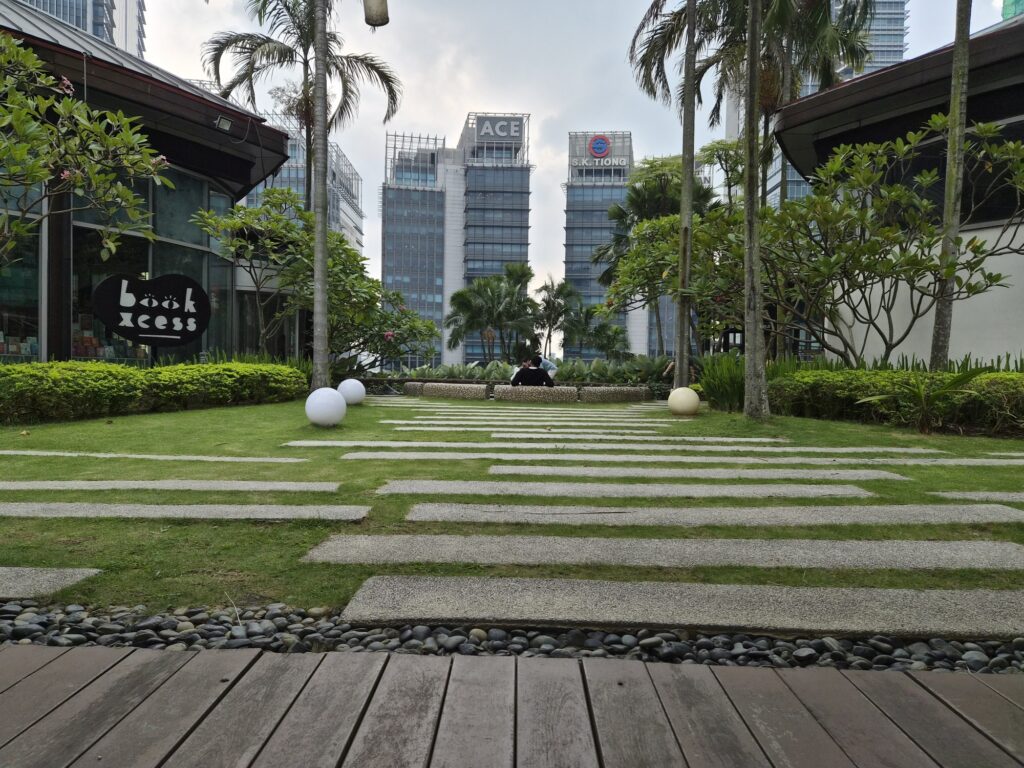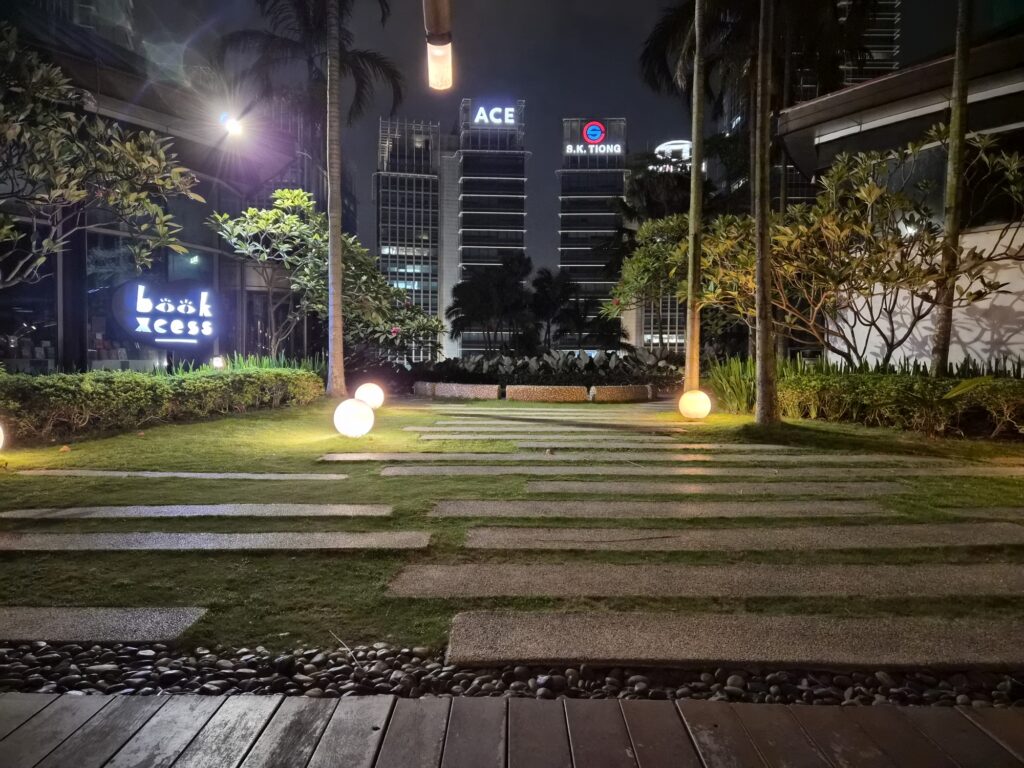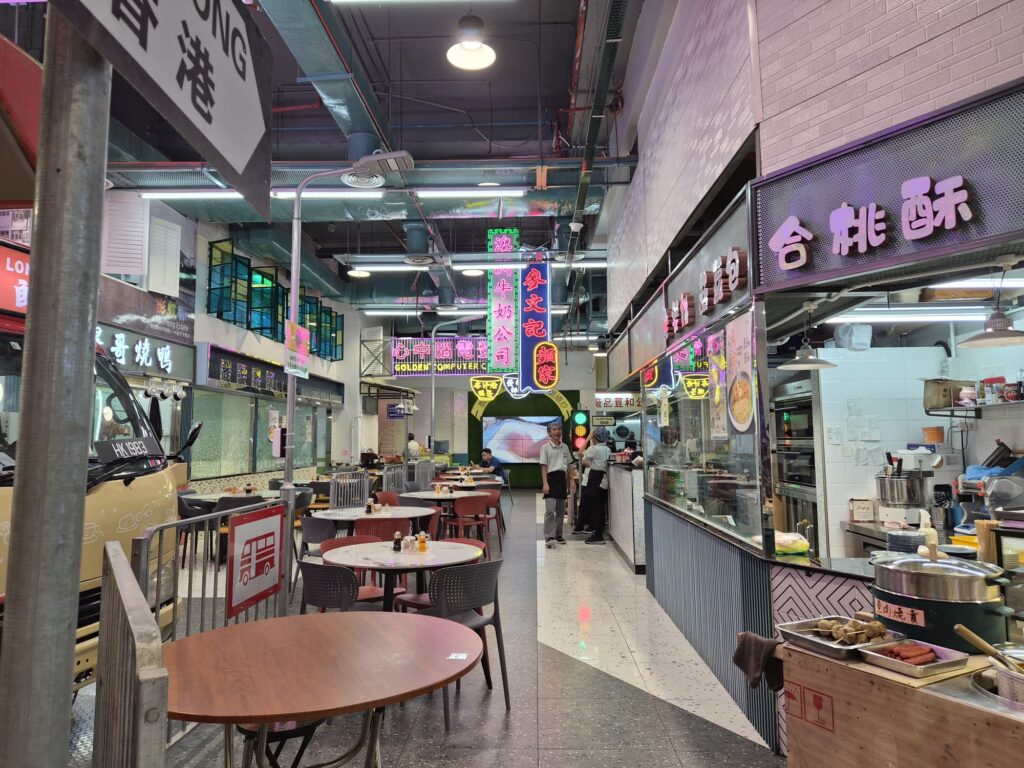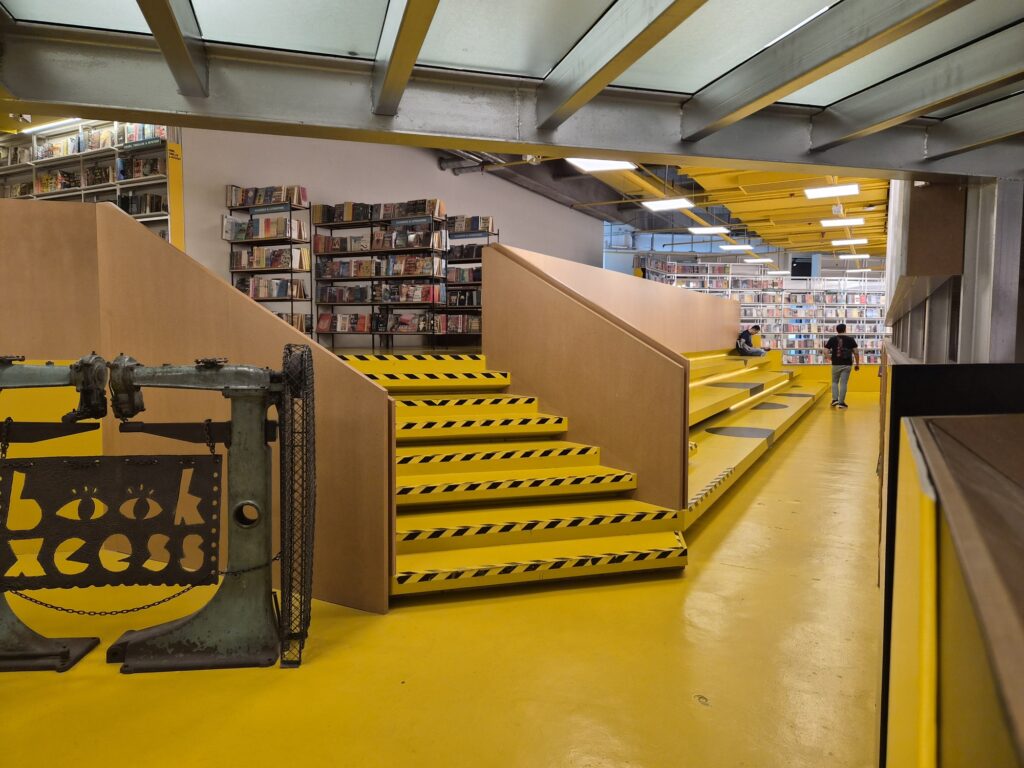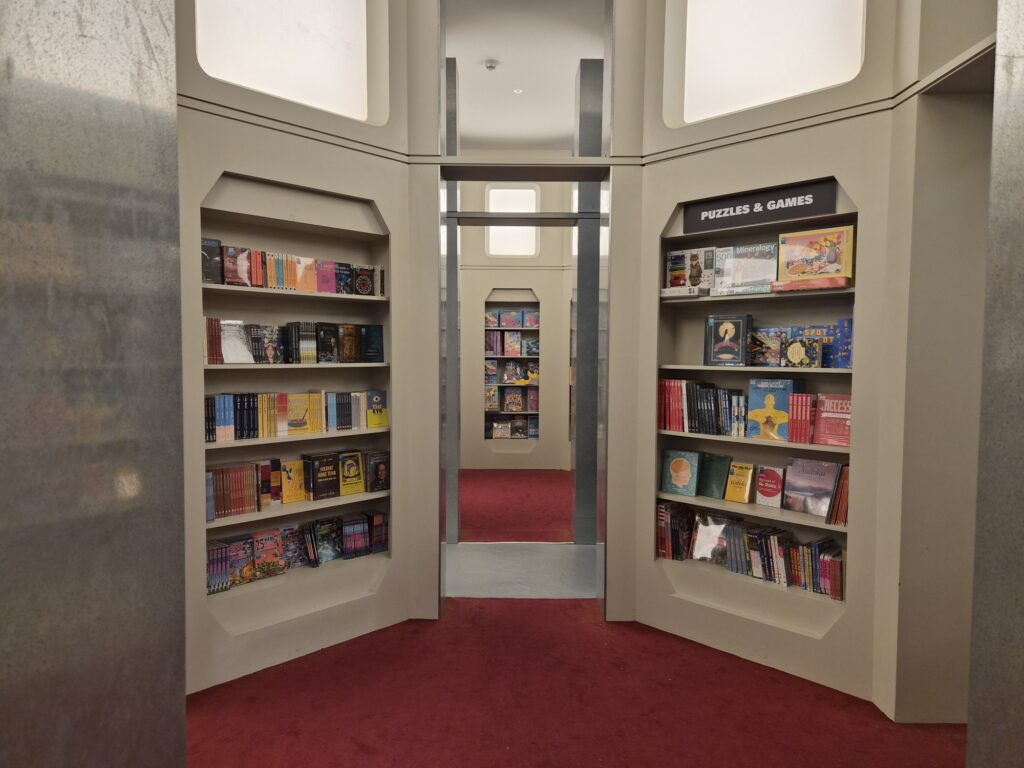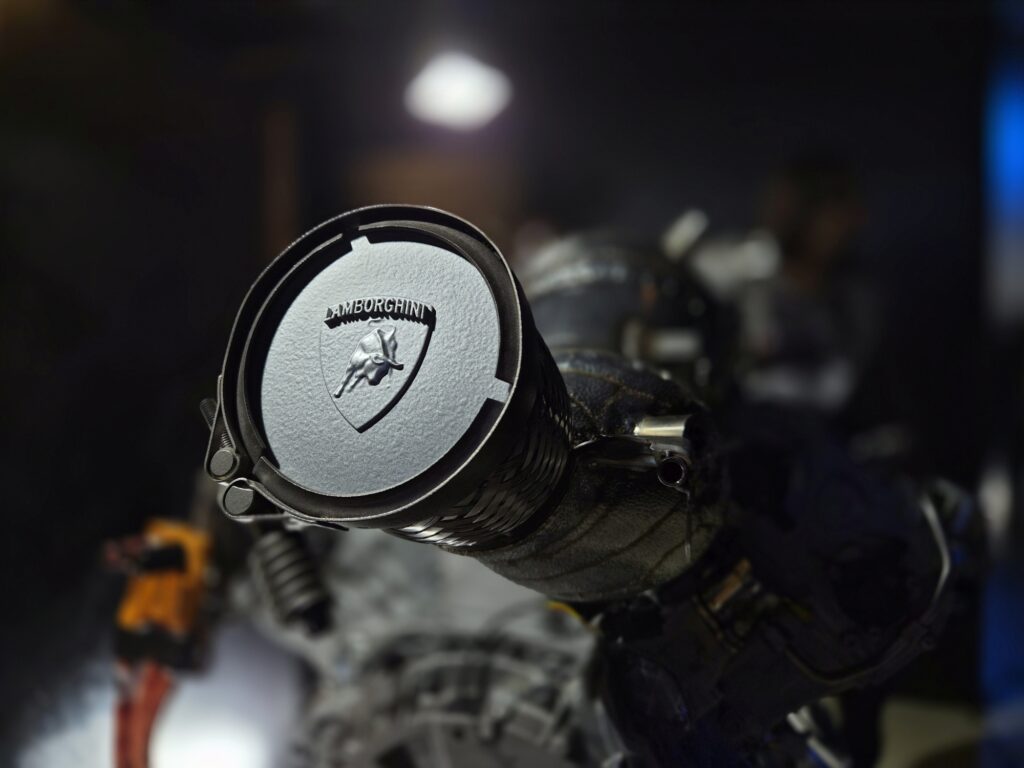There’s no denying that the spotlight for this year’s H2 Samsung Galaxy Unpacked is beamed solely on the Galaxy Z Fold7. And no wonder – it has finally gotten a design evolution, now not only looking visually different from before, it also has the thinness to compete with – and even beat – the competition. But that’s not what we’re talking about today.
Instead, we’re here to discuss the Samsung Galaxy Z Flip7, which has seen mostly incremental upgrades from its predecessor. Sure, it does benefit from some of the tech advancements that’s featured in the larger Fold7, such as the improved hinge. Beyond that, the only obvious upgrade here is the cover screen. But is that truly the whole story? Let’s find out.
Specifications
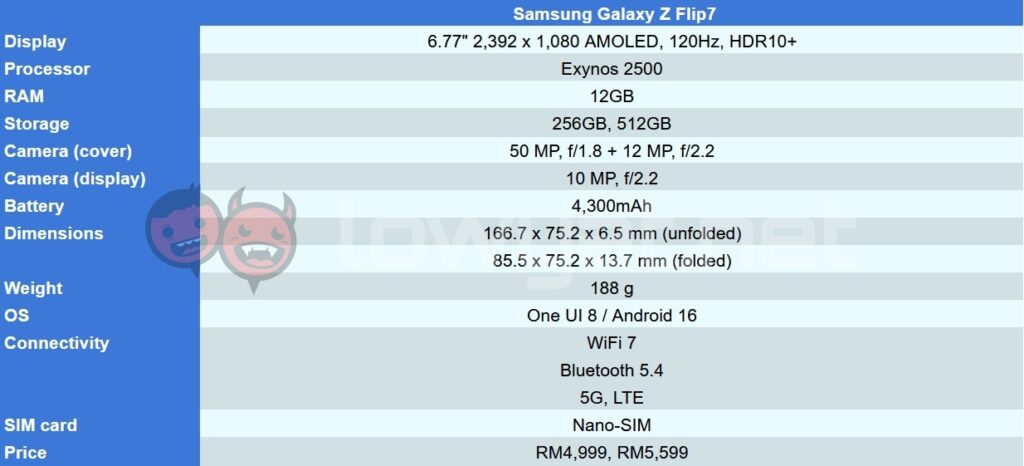
Looks & Functionality
Spoiler alert: it actually is. Sure, the screen now takes up the whole of the top clamshell, and the rings around the cameras are not coloured to match the phone, so as to blend in with a turned-off screen better instead. But beyond that, it works mostly the same as it did in the previous iteration. As before though, most of the usability of the FlexWindow cover screen is still thanks to the MultiStar add-on.
Said add-on got updated near the tail end of the review process, which allowed me to give it a last minute test run. And for most apps without the need for a keyboard, it’s pretty functional. You can also adjust the aspect ratio of apps being displayed, going from what looks like the full square, horizontal 16:9 or vertical 9:16. Considering this add-on is so important to fully utilise the cover display, why it is not pre-installed remains the elephant in the room.
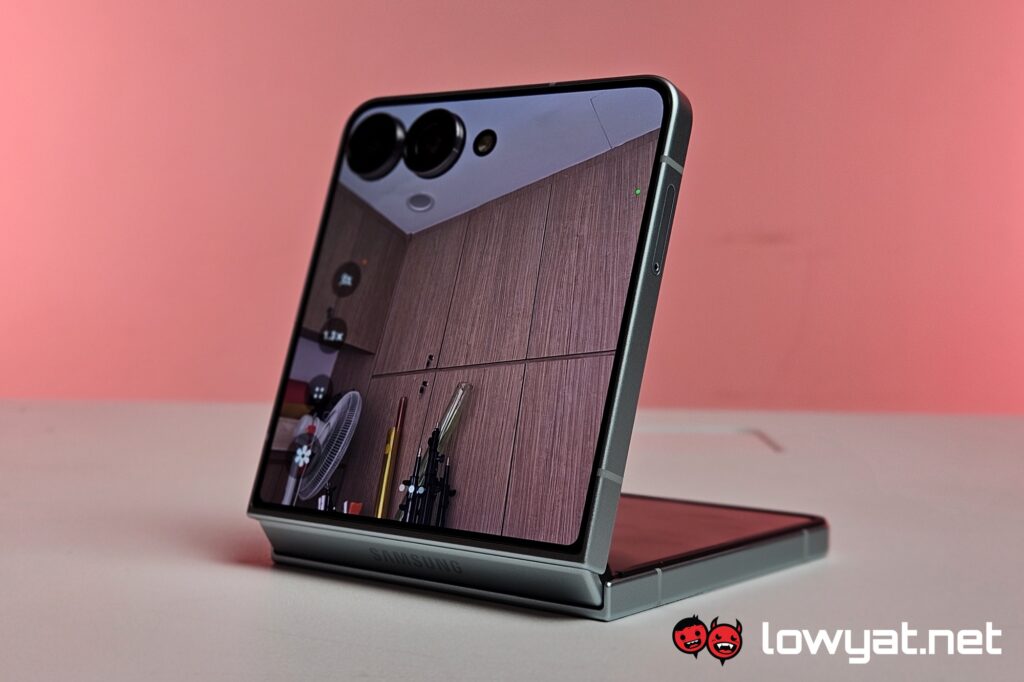
Flipping the phone open, we see more incremental upgrades, some more visible than others. The most visible of them all is, once again, the screen. Despite it being larger than before, now measuring 6.9 inches, it actually has less pixels than the previous phone. This does mean that the Samsung Galaxy Z Flip7 has an aspect ratio of exactly 21:9, for what it’s worth.
Less obvious is everything else related to the hinge. Samsung says that the Galaxy Z Flip7 sports an improved hinge that folds flatter than before. And I’m inclined to believe it this time, as I’ve failed to see the odd gap that I couldn’t unsee with the Fold6. There’s still a gap between the rubber bumps on the bezels and the point where the hinge is, but since it’s not exactly practical to never unfold this device, dust collecting there is less an issue than just the usual buildup. Worth mentioning also is that the water drop shape that the screen folds into is a lot more visible now when you only slightly unfold the device.
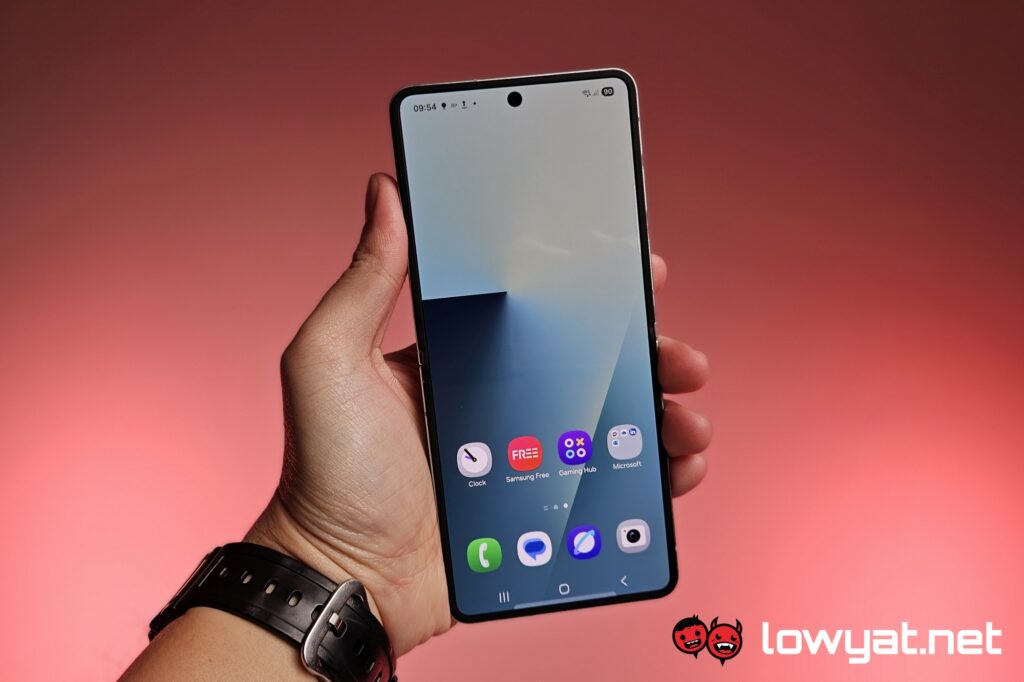
In use, when the Samsung Galaxy Z Flip7 is, well, flipped open, it takes a while to get used to the fact that you’ll be feeling two distinct textures on your fingers. The half where the colour of your phone is feels like the usual frosted glass, but the half with the cover display is a lot stickier on the fingers. Despite this though, the main display is the bigger smudge magnet of the two, requiring about twice the frequency of a good wipe compared to the smaller screen.
One final nitpick is the fingerprint sensor on the power button. Compared to the generations before, it’s visually obvious that it’s a lot smaller this time around. This is because it’s of the same measurement as the one found on the Galaxy Z Fold7, likely a move to cut down production costs. This too takes awhile to get used to, both as something you notice when looking at it, and as something you rub your fingers over to unlock the device.
Finally, it’s also worth noting that for the first time in the series, the Galaxy Z Flip7 comes with Samsung DeX support. It was an odd omission before, but it’s here now, for those who make frequent use of it.
Performance & Battery
Continuing the pattern of minimal meaningful changes between generations is the Exynos 2500 chipset that the Samsung Galaxy Z Flip7 uses. Some will see this as a point of contention, and unfortunately it’s not without good reason. And this is immediately observable from the synthetic benchmarks.
The easiest to compare are the 3DMark tests. The Samsung Galaxy Z Flip7, with the 3nm Exynos 2500, has higher ceilings at times but consistently lower floors across tests compared to the 4nm Qualcomm Snapdragon 8 Gen 3 in the Flip6. Of course, without these numbers being presented in such fashion, the difference in performance isn’t something that’s obvious to anyone beyond the sharpest-eyed pixel peeper.
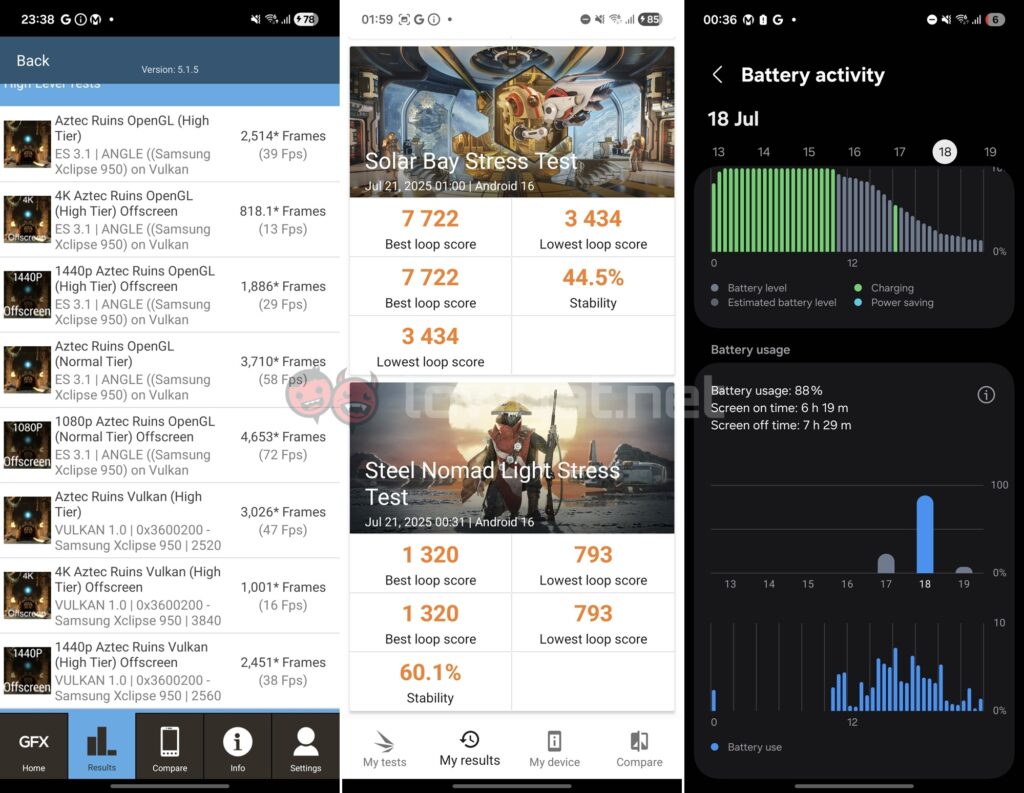
On that note, it’s worth noting that due to the nature of the Samsung Galaxy Z Flip7, heat distribution is very uneven when any is felt. Specifically, heat buildup on the half without the cover display is slower, if ever. When playing Yu-Gi-Oh! Master Duel, I’d say that the half without the screen remained cool the whole time. This meant that I’d occasionally rotate the phone just so that one hand gets some rest from the heat, and fortunately the game accommodates that. The same technically applies for when charging, though the disparity is not as severe.
Things get a little weird with our usual battery life test though. For the video loop test, the Samsung Galaxy Z Flip7 lasted just under 16 hours, so only marginally better than the predecessor. Since charging is still limited to 25W, this means going from flat to full in just under 85 minutes.
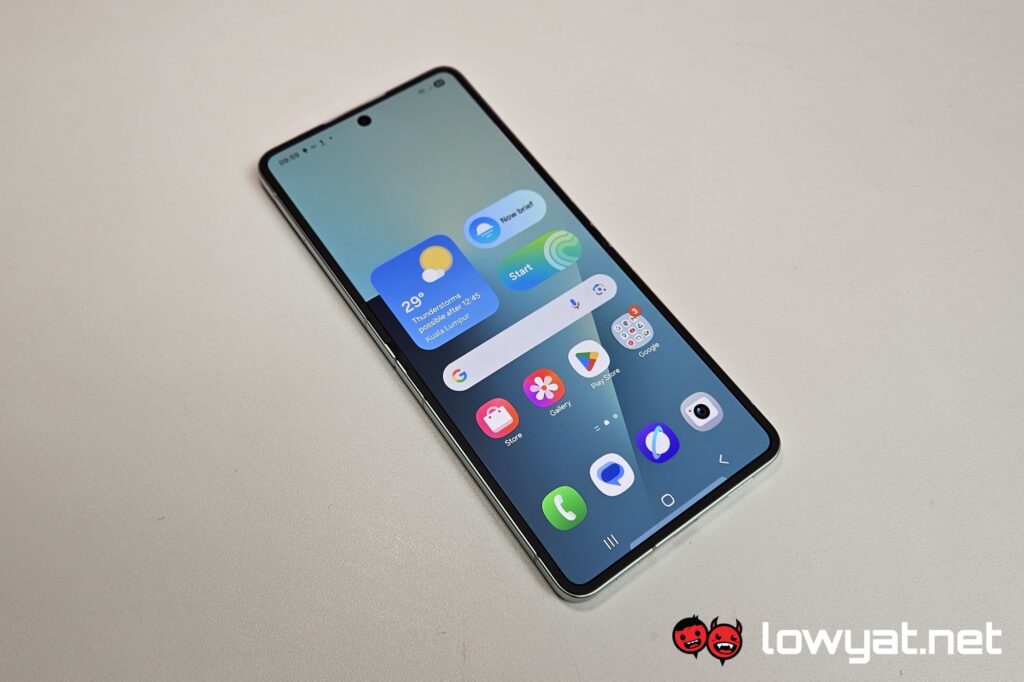
In real world use, things are pretty comfortable, so that’s much the same as the previous model. On a day that I had the Samsung Galaxy Z Flip7 do just about everything under the sun minus gaming (navigation, shooting photos, video streaming with multiple browsers), I ended the day with just over 5% of battery. On more relaxed days, this is closer to 50% instead. So while it’s not quite enough to go two full days, lasting a single day is no issue unless you forgot to charge it the night before.
While regular use proved to be no issue, I’ve encountered the occasional frame rate drops when videos. It’s unclear what’s to blame here as it doesn’t seem to apply when gaming.
Camera
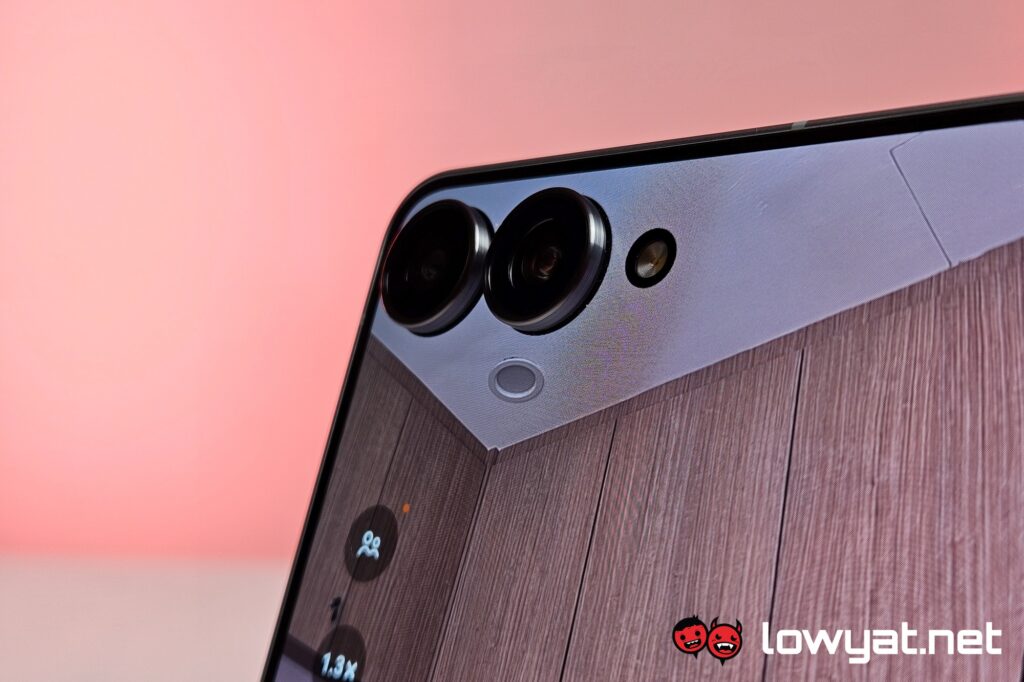
Since the Samsung Galaxy Z Flip7 uses the same camera config as the Flip6, there’s nothing much to say here on the hardware front. And from a few sample shots, it looks like things are unchanged on the software side of things as well.
What this means is the same great clarity, detail, sharpness and colours as the Flip6. But this also means the same occasional issue of the autofocus exacerbating the large aperture’s shallow depth of field. Not an issue when you’re shooting landscape, but it rears its head when taking close ups of multiple objects with varying distance. Or a single long object at an angle, for that matter.
Having the same setup as before also means lacking any sort of optical zoom. The 2x digital zoom is serviceable, and one can argue that the 4x is the same under optimal lighting conditions. But I’d hesitate to go any further.
Sample Images
Competition
Samsung Galaxy Z Flip6

With other brands being as sporadic as they are with clamshell-type foldables, the only real competition to the Samsung Galaxy Z Flip7 is its own predecessor. As mentioned too many times by now, there’s very little different between the two besides the cover display. In a sense, any of its competitors would also serve the same for the current Flip7.
Conclusion
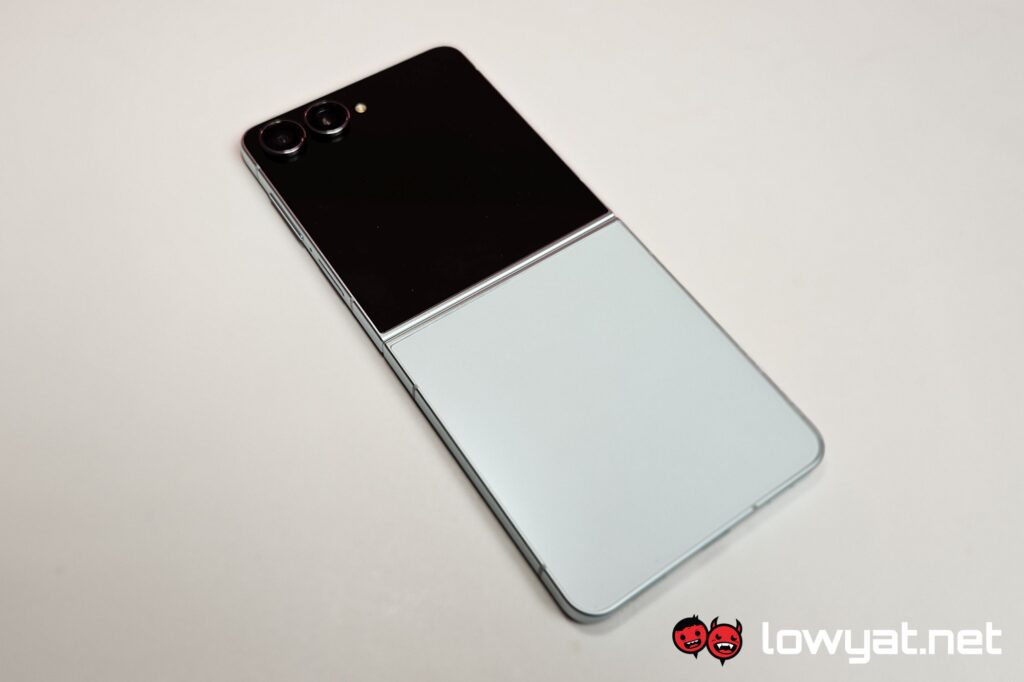
For better or worse, the Samsung Galaxy Z Flip7, is only marginally an improvement over the last year’s clamshell entry. Which, unfortunately, has been said of the series before, and it’s true once again with this generation.
That’s not discrediting the new cover screen though. After all, it’s hard to say no to double the refresh rate, and another 1,000 nits of peak brightness on top. As mentioned, essential software to make full use of this doesn’t come pre-installed, and at the beginning of the review process, wasn’t updated for the new hardware.
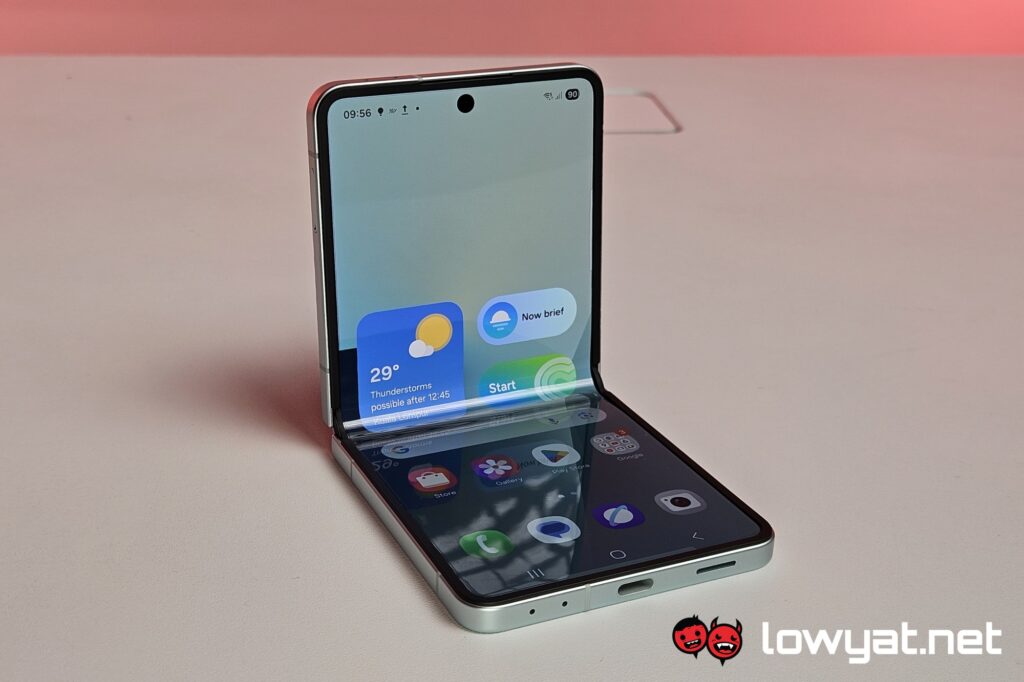
But on the flip side, the 0.2-inch increase in the main screen’s size, and the loss of a few pixels to go with it, aren’t exactly impactful. At least, not enough that it would provide a completely different experience, my fondness of the 21:9 aspect ratio aside. And in terms of sheer performance, as mentioned the 3nm Exynos 2500 has higher peaks and lower valleys than the 4nm Snapdragon 8 Gen 3, with averages still very marginally being in the latter’s favour.
Charging speed is stuck at 25W, and while the additional 300 mAh battery is appreciated, the material difference is minimal. For what it’s worth, the presence of Samsung DeX support is another hole in the series that finally got plugged.
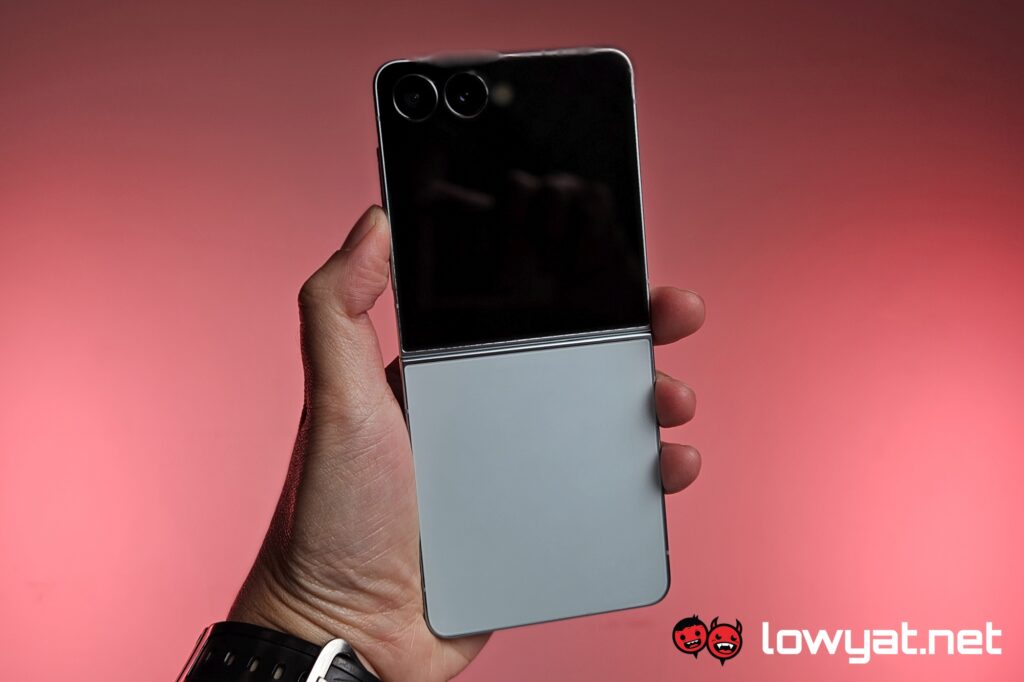
Ultimately, whether the Samsung Galaxy Z Flip7 is worth getting over the previous generation clamshell foldable really depends on if you really need Samsung Dex. If not, and you already own the previous model, you’re probably in no rush to upgrade.
Photography by Adrian Low.

